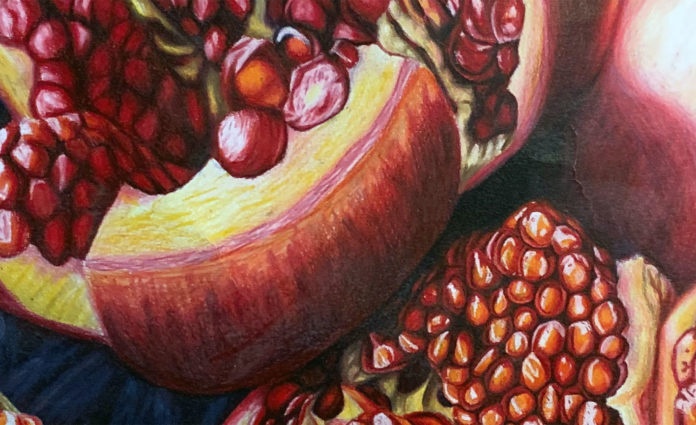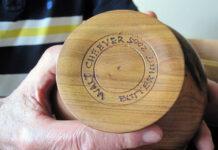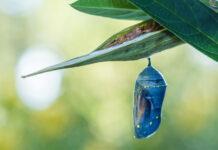For Vincent Kenobbie, the last few years have been all about change.
There was his move from the tiny town in South Dakota where Kenobbie graduated with just 24 people in his class, to Saint Peter, Minnesota, where Kenobbie found his new family of friends, at Gustavus Adolphus College. There were all the sudden changes and challenges of dealing with a global pandemic while continuing to study art. And, perhaps the greatest change, as Kenobbie came out as a transgender man and began publicly living his truth. Throughout it all, his art has remained vital; a way to process and navigate an ever-changing world.
Early life
You wouldn’t know it from watching the confident man surveying and arranging his art on the Fillin’ Station walls, but Vincent Kenobbie was once a painfully shy person.
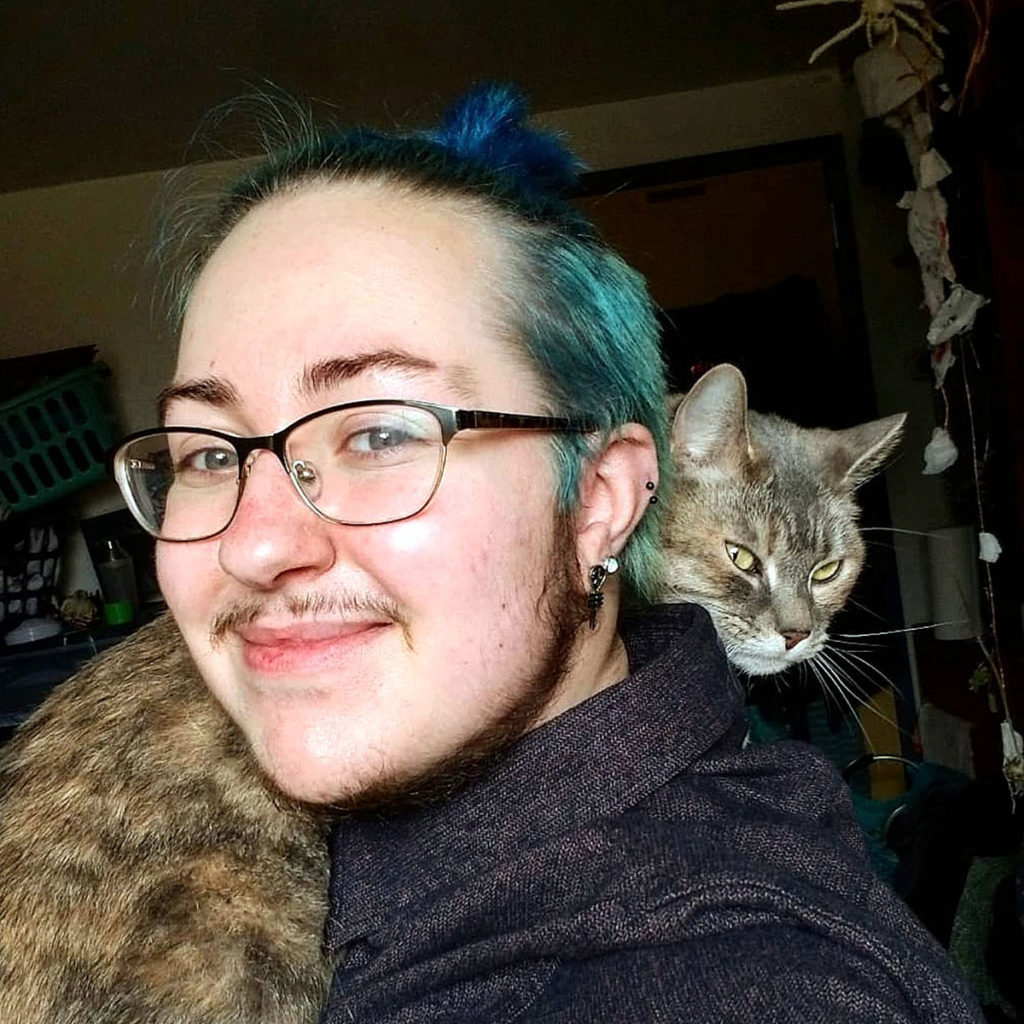
“I’ve had anxiety most of my life. I was always scared of people, scared of talking to people. I wasn’t really social when I was young. I spent a lot of time in my room, painting and drawing,” said Kenobbie. “Where I’m from, mental health and mental illness aren’t readily spoken about.”
During his childhood, Kenobbie spent a lot of his time online researching art and learning to draw from YouTube tutorials. During middle school and high school, art became a lifeline, a way to empty out the depressions and process a world that didn’t feel safe.
“In my life I have dealt with a lot of death. A lot of my family I grew up with, extended family, got cancer and I would visit them in the hospital, and I would see them dying, so death really stuck with me. It continued with my experience with depression, just being hand-in-hand with death,” said Kenobbie. “That’s why the vultures and the skulls come in. They’ve been with me throughout my entire artistic life.”
He poured himself into his art, imagining a future outside of those surroundings.
“There are no artists where I’m from. I focused on getting out,” said Kenobbie.
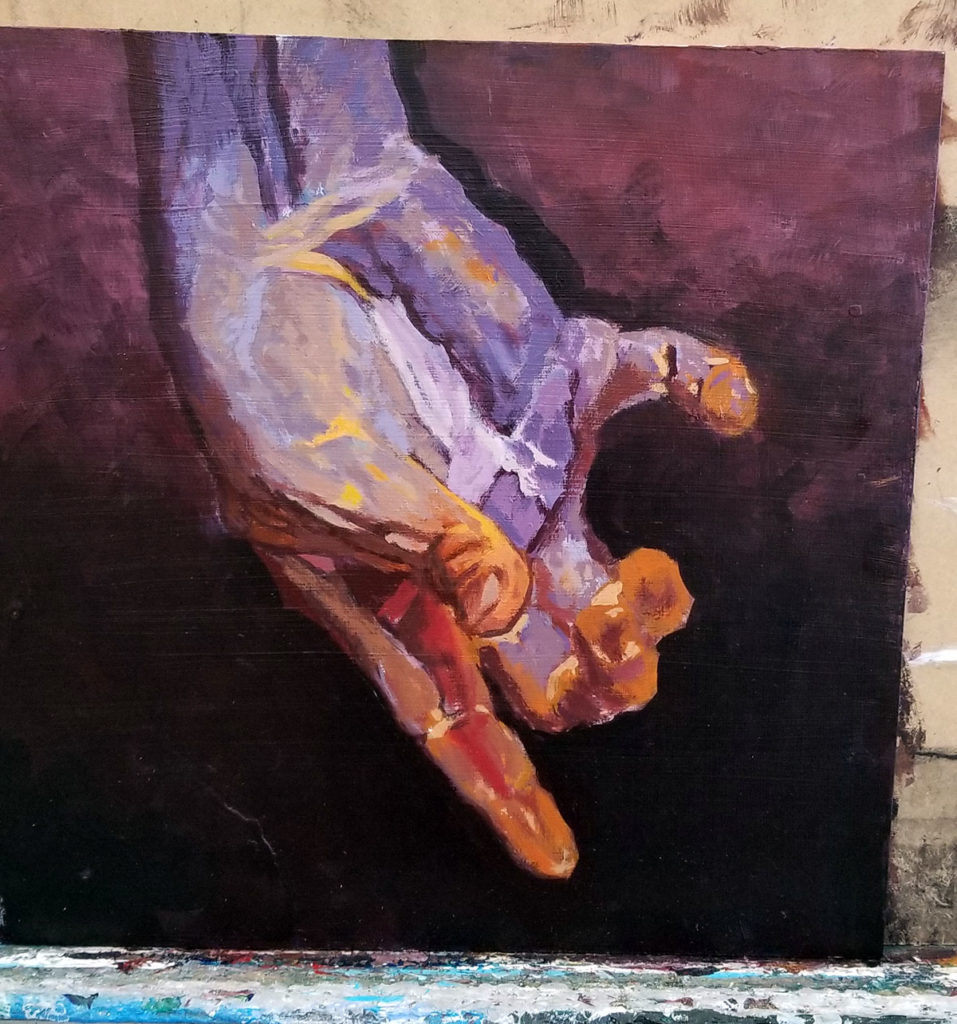
Transitioning
Kenobbie never felt comfortable being himself while growing up in a small, rural town. In fact, he says he didn’t even allow himself to consider the idea of transitioning until he had moved away from his hometown.
“I would hear classmates joke about wanting to kill people like me,” said Kenobbie. “I was afraid to come out, afraid someone might hurt me. I didn’t even come out as bisexual until senior year graduation, because I knew I was leaving the state and I would be safe.”
Things can seem so bleak in the moment but if you hang on and find your community, if you just focus on finding who you really are, yeah. It gets better.Vincent Kenobbie
Then, everything changed when Kenobbie came to Gustavus. Surrounded by new people and perspectives, Kenobbie was able to begin exploring his identity in earnest.
“It was the first time I had a face-to-face conversation with someone who was transgender. Someone I could talk to and discuss what I was going through,” said Kenobbie.
Supported by his beloved found family, Kenobbie began publicly living as a man the fall he started college. He has since begun testosterone and researching the process to medically transition. He says Gustavus made changing his name an easy process, and someday, when he is up to tackle the often difficult and complicated process, he’ll get his name legally changed as well.
“I identify as a transgender man and bisexual,” said Kenobbie. “I’ve met so many people who are like me. It’s amazing to be able to go from being afraid for my life to being safe in my dorm. I do still experience some fear, using restrooms or going off-campus, but I’m in a much better place than I ever was.”
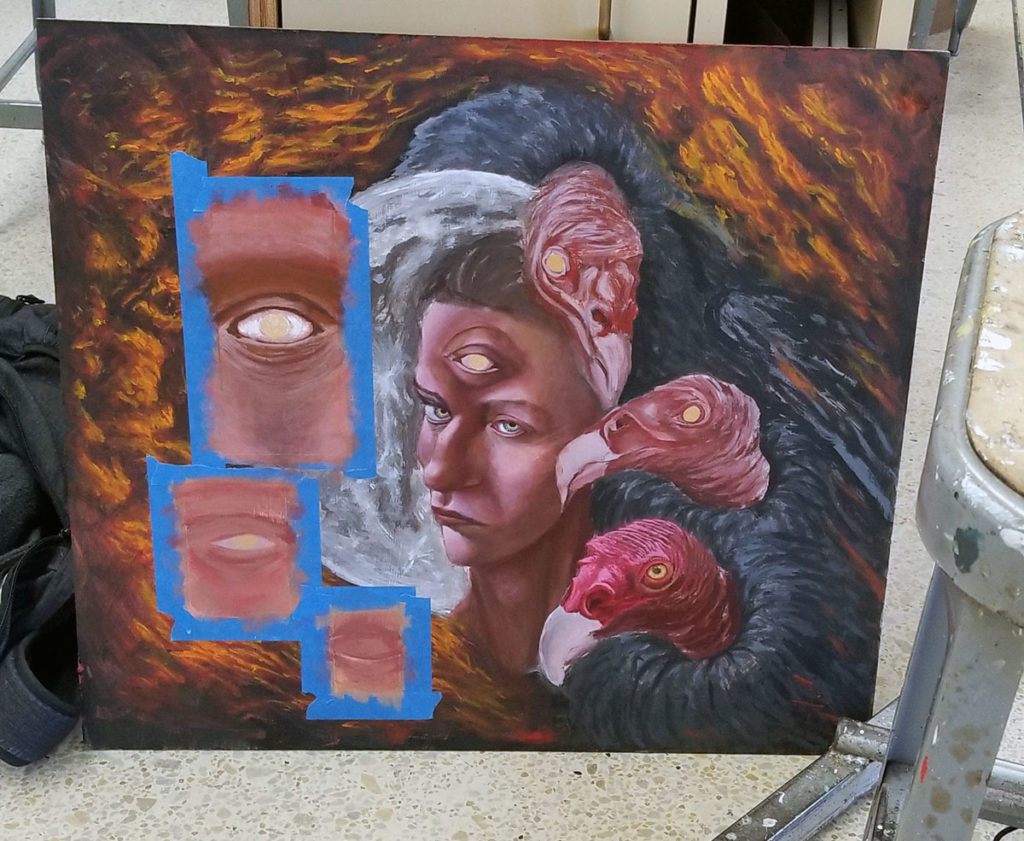
In the studio
COVID nearly put a halt to Kenobbie’s art. With restrictions he wasn’t able to use the studio and was stuck in his room, only able to create with the materials he had around. Like a lot of people living through the age of COVID, it was a difficult time, and, as the weeks turned into months of isolation, Kenobbie even considered dropping out. But things are brighter than ever now, as with vaccines rolling out and restrictions lifting, he’s been hitting a flow with his art.
“The last couple of weeks I’ve been in the studio every day. It’s amazing. I’m finally in a better place mentally. My partner is a painter too, so we motivate each other to go in and we will be in the studio until midnight,” said Kenobbie.
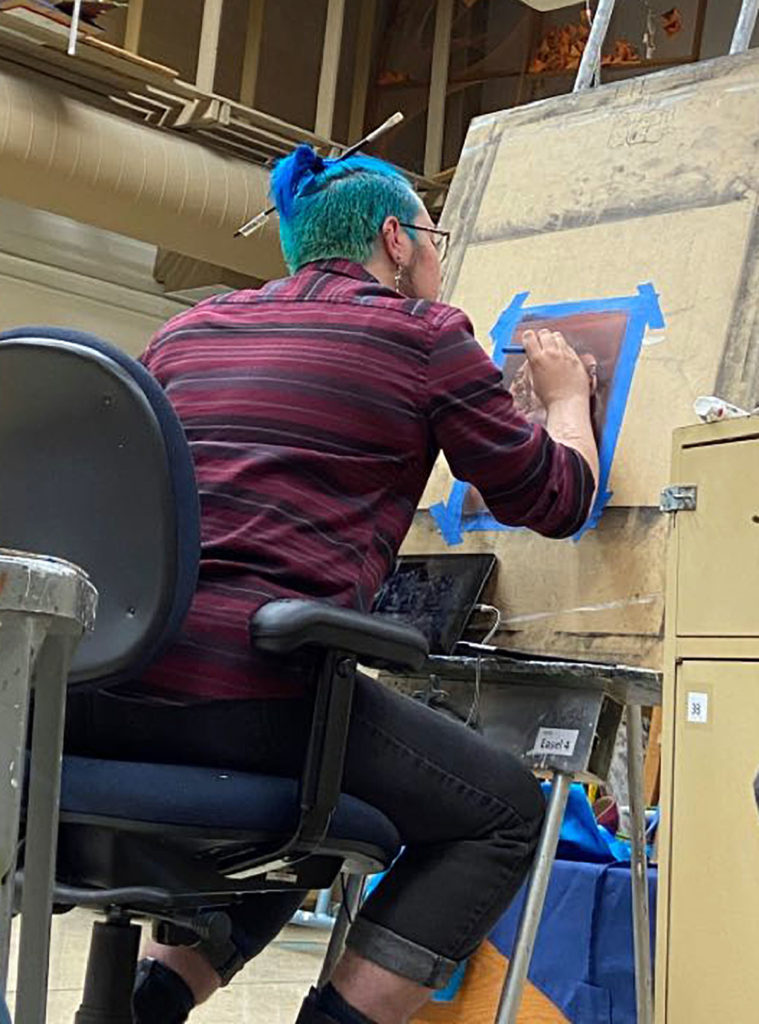
Though Kenobbie’s life has changed drastically over the years, his skulls, skeletons and vultures have remained. Each piece is a little different, and as he explores new mediums, Kenobbie’s style grows a little more with each creation.
“I make a sketch and from there I’ll jump into the piece, building up layers, taking bits away. Sometimes, like in my two Painful pieces, I look at the skeleton and don’t even look at the paper. I draw based on feel, based on how I’m observing the object,” said Kenobbie. “I like that method because it’s a still life but not. It’s a still life felt through my own body. It’s not really visual. It’s a bodily experience.”
The vultures, and skulls hold a strong place in his works, but Kenobbie pulls inspiration from many sources: artists like Denis Sarazhin and Francis Bacon, the art he finds while scrolling Instagram, and, perhaps most importantly, from his friends.
“Being surrounded by such amazingly supportive people has been vital in my growth as an artist. They’ve been keeping me going and on track towards my future in art,” said Kenobbie.
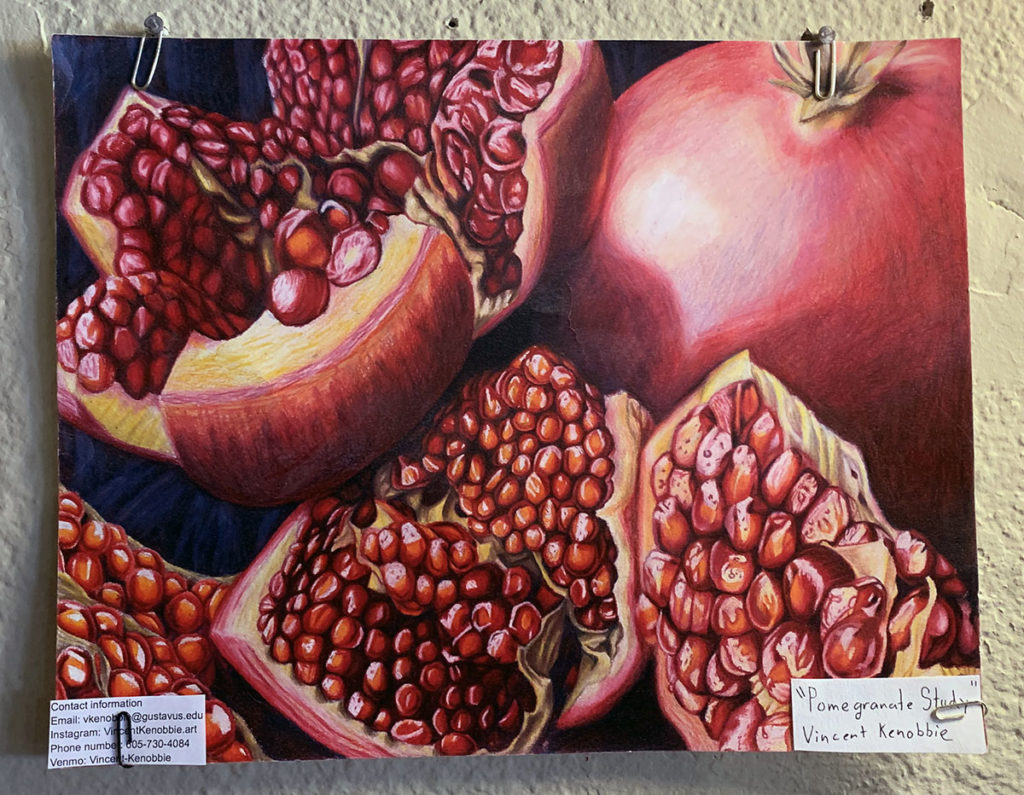
Reaching out through the canvas
Just as art was a lifeline for him during his darker days, Kenobbie wants to use his art to reach out and connect to others who may be going through similar struggles. He points out that simply being a member of the queer community is traumatic, having his identity and rights debated publicly is a constant struggle. He wants other members of the queer community to know they’re not alone.
“It’s only been two years and I’m a completely different person. I look completely different. I act completely different. It’s so cliché to say, ‘It gets better,’ but it literally does,” said Kenobbie. “Things can seem so bleak in the moment but if you hang on and find your community, if you just focus on finding who you really are, yeah. It gets better.”
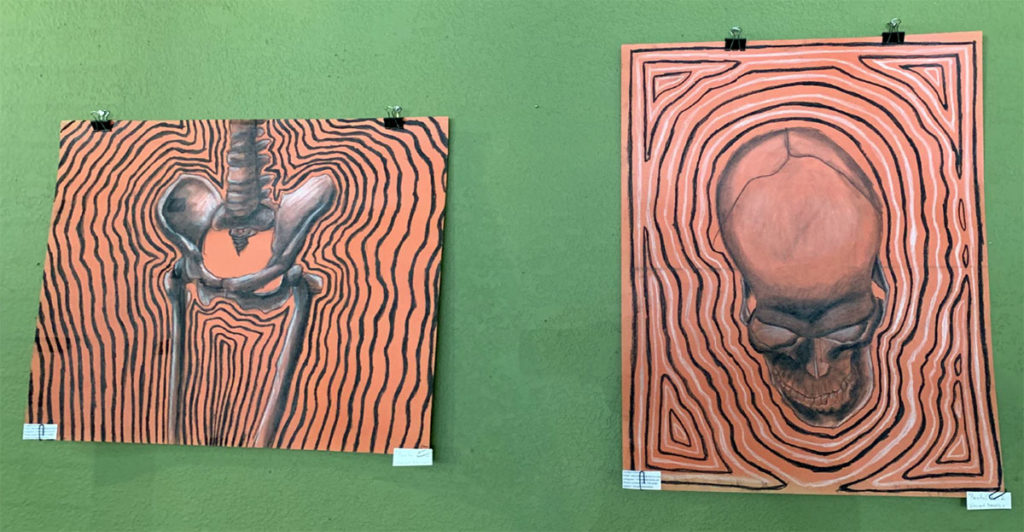
Much of Kenobbie’s recent art also centers on themes of mental illness, depression, anxiety, and Kenobbie’s experiences struggling with vertigo. Pieces like Lightheaded and Emty turn from the real to the surreal as Kenobbie attempts to capture the internal experiences of vertigo and deep depressive spells.
“A lot of people I’ve gone to school with struggle and refuse to seek help, and it harms them. The stigma is a big reason I didn’t seek help until senior year, and I didn’t talk about my struggles with anyone except really close friends,” said Kenobbie.
Through his art he hopes to alleviate some of the stigma around these topics, and extend a sense of humanity to anyone who may view his work. Fear of Illness, a piece studying the motions of handwashing, addresses the recent public obsession with sanitizing, while the still life Pomegranite Study adds a vibrant shot of redness to the mostly black and white collection. He wants his art to bridge the gap between himself and others.
“I want other people to know that their existence is important. Everyone deserves to live as their authentic self,” said Kenobbie. “I like to make the work and display it, share it on social media. I want to help people relate to me and my experiences. Just to say I’m experiencing this, You’re not alone, I’m just like you.”
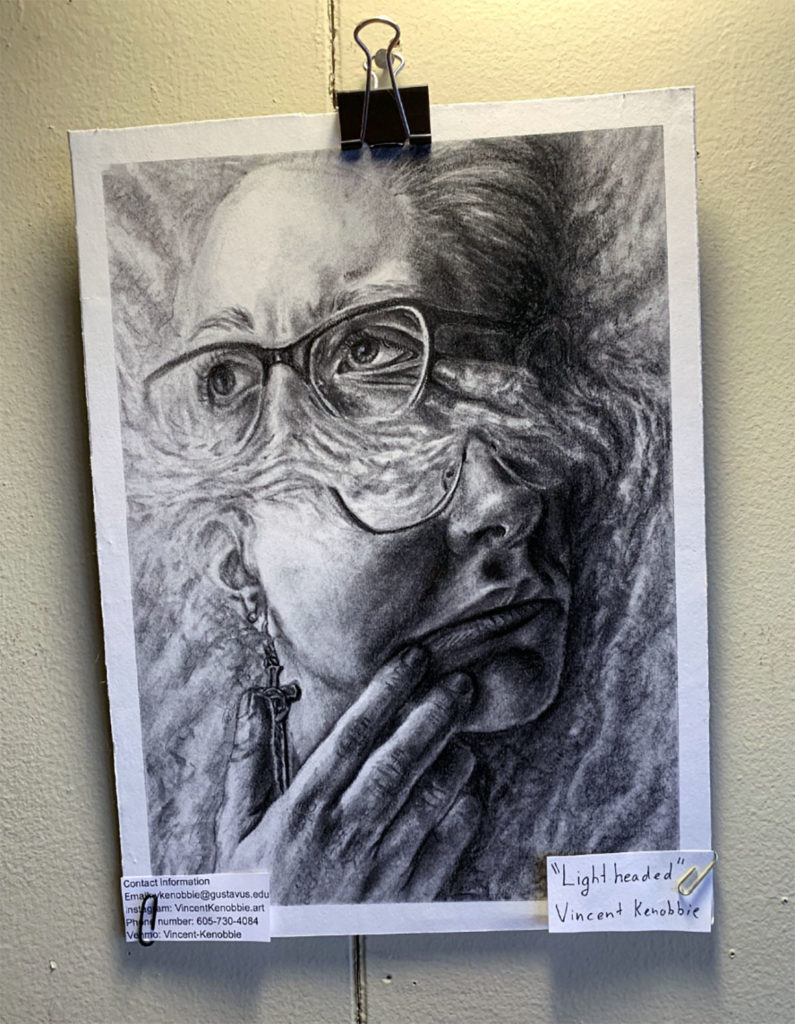
Future plans
Kenobbie’s collection will be up at the Fillin’ Station throughout the month of April. The collection will grow and change as some of his pieces finish their exhibition at the Schaefer Art Gallery in Saint Peter and come to hang in Mankato. All pieces are available for purchase, and those interested in taking home a piece can contact Kenobbie via email at vkenobbie@gustavus.edu. Kenobbie is also available for limited commissions. You can follow Kenobbie’s artwork and journey on Instagram at vincentkenobbie.art.
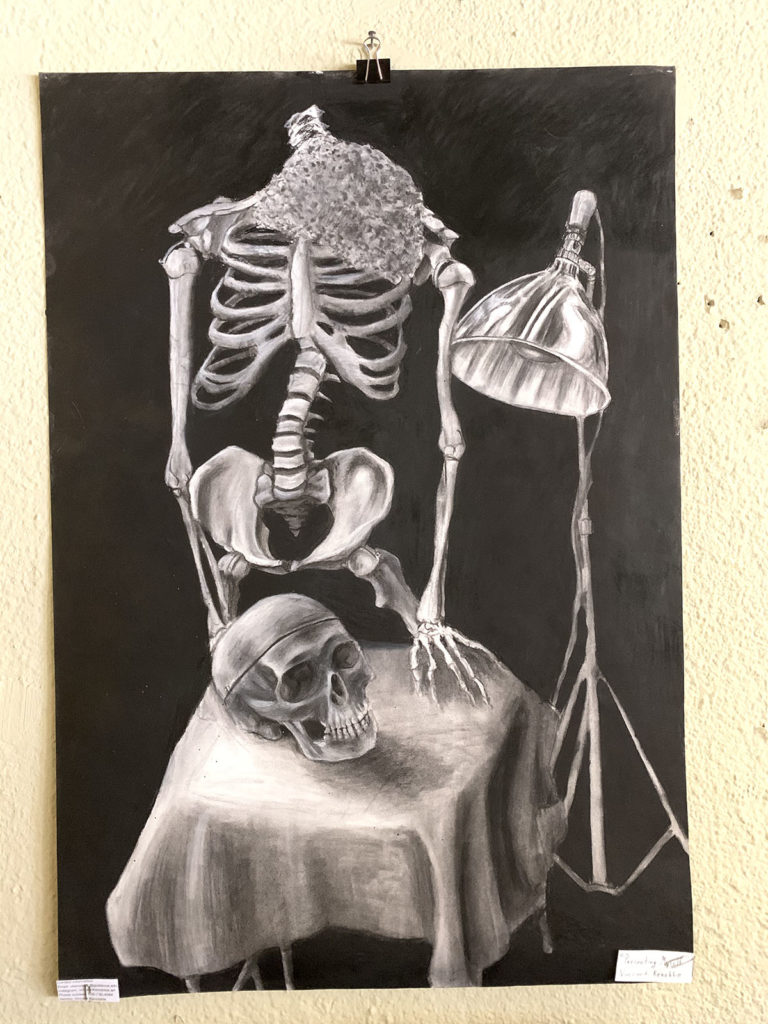
For now, he’s focusing on building his portfolio and getting more of his art out into the world. In the future he’s hoping to study art abroad and get his work displayed in more venues and galleries. For Vincent Kenobbie, the future just gets brighter. Keep your eyes on this growing artist.

